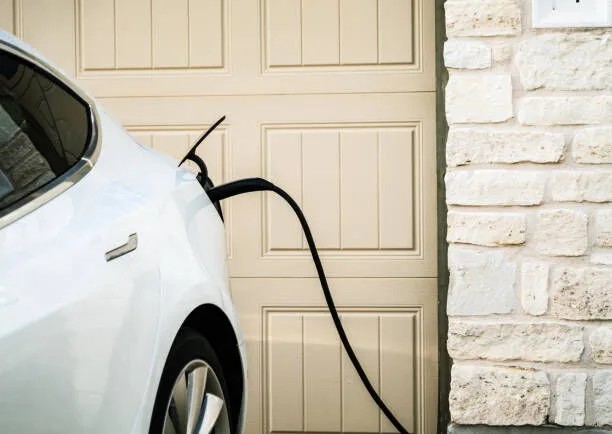Introduction
As a Professional EV Charger Manufacturer in China, Topper Company Provides Reliable Electric Vehicle Charging Stations and Comprehensive Charging Solutions.
In today’s world, where sustainability and energy efficiency are paramount, innovative technologies are reshaping how we consume and manage power. One such breakthrough is Vehicle-to-Home (V2H) technology, which leverages electric vehicles (EVs) as mobile energy storage systems to provide backup power to homes and businesses. V2H enhances energy resilience, reduces costs, and promotes environmental sustainability. As we move towards renewable energy and smarter grids, V2H is poised to become a key player in the future of energy management.
Home EV Charger: What is Vehicle-to-Home (V2H)?
Vehicle-to-Home (V2H) is an advanced technology enabling energy stored in an EV’s battery to power a home or small business via bidirectional charging systems. Unlike traditional one-way charging—from grid to vehicle—V2H allows energy to flow both ways, enabling the EV battery to discharge energy back to the home.
When connected to a V2H-enabled charger, a fully charged EV (holding about 60 kWh) can power a typical home for up to two days, serving as a mobile backup generator during outages. V2H is also called Vehicle-to-Building (V2B) when used for commercial or multi-unit residential buildings.
V2H helps homeowners reduce energy costs by charging during low-cost, off-peak hours and discharging during expensive peak periods. When combined with solar panels or other renewables, it fosters a sustainable, self-sufficient energy ecosystem.
How Does V2H Work?
- Charging the EV: The EV charges from the grid or renewable sources, typically during off-peak hours when electricity is cheaper.
- Energy Storage: The EV battery stores this energy, with modern batteries ranging between 40–100 kWh.
- Discharging to the Home: During outages or peak demand, the battery discharges energy back into the home via a bidirectional charger.
- Integration with Energy Management: Smart home energy systems manage when to draw power from the EV or grid based on demand and electricity prices.
- Recharging: After discharging, the EV can recharge during off-peak hours or using surplus renewable energy, readying it for driving.
Benefits of Vehicle-to-Home (V2H) Technology
- Energy Resilience & Backup Power: Keeps essential appliances running during outages without noisy, polluting generators.
- Cost Savings: Shifts energy use to avoid peak-rate electricity charges, reducing energy bills.
- Environmental Impact: Maximizes renewable energy use and reduces fossil fuel dependence by storing excess solar power in EVs.
- Alternative to Home Batteries: Uses the EV battery as an energy storage system, reducing the need for costly additional batteries.
- Grid Stability: Helps utilities manage demand by lowering peak loads and reducing grid strain.
- Enhanced EV Utility: Makes EVs more valuable by extending their role beyond transportation to energy management.
Challenges and Considerations
- High Initial Costs: Bidirectional chargers and compatible EVs require upfront investment, though costs are expected to fall.
- Battery Degradation: Frequent cycling may shorten battery life, but manufacturers are improving durability.
- Regulatory & Infrastructure Barriers: Need for supportive policies and grid infrastructure upgrades.
- Compatibility: Not all EVs and home systems support bidirectional charging—compatibility must be verified.
- Complex Energy Management: Requires advanced software and systems to optimize energy flow effectively.
The Future of V2H Technology
- Better Batteries: Increased capacity, lifespan, and affordability will accelerate adoption.
- Smart Grid Integration: V2H will work in tandem with smart grids for dynamic energy balancing.
- Government Support: Incentives and policies will encourage adoption.
- Consumer Awareness: Education will boost demand for V2H-capable EVs and chargers.
- Industry Collaboration: Partnerships between automakers and utilities will standardize and improve V2H infrastructure.
Conclusion
Vehicle-to-Home technology is a transformative advancement in energy management, turning EVs into mobile energy hubs that enhance resilience, cut costs, and support a sustainable energy future. While challenges exist, the benefits are compelling, making V2H a vital component of the evolving clean energy landscape. As technology advances and adoption grows, V2H is set to become a cornerstone of smart, renewable energy systems worldwide. Know more about Google SEO Directory





Comments